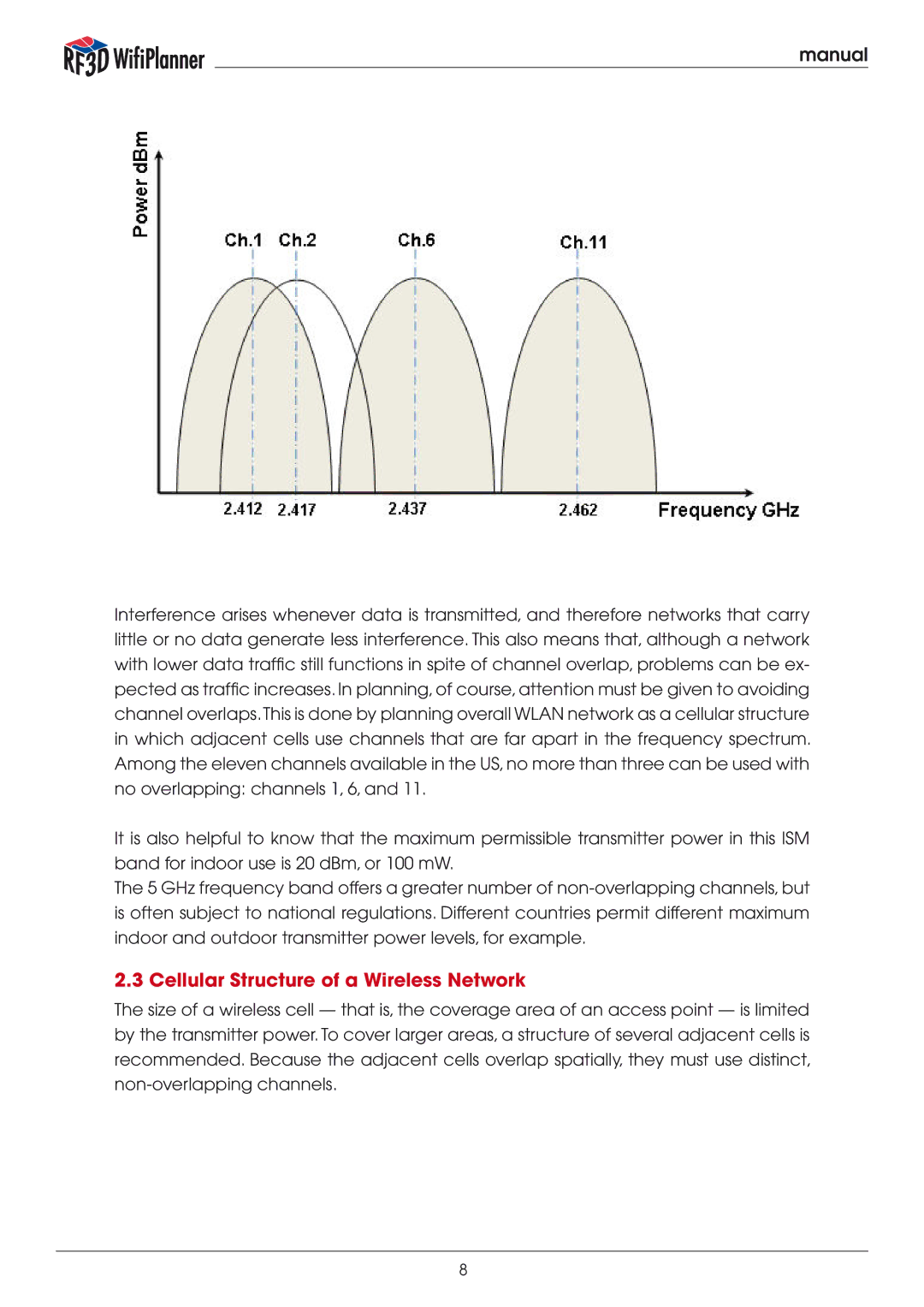
manual
Interference arises whenever data is transmitted, and therefore networks that carry little or no data generate less interference. This also means that, although a network with lower data traffic still functions in spite of channel overlap, problems can be ex- pected as traffic increases. In planning, of course, attention must be given to avoiding channel overlaps.This is done by planning overall WLAN network as a cellular structure in which adjacent cells use channels that are far apart in the frequency spectrum. Among the eleven channels available in the US, no more than three can be used with no overlapping: channels 1, 6, and 11.
It is also helpful to know that the maximum permissible transmitter power in this ISM band for indoor use is 20 dBm, or 100 mW.
The 5 GHz frequency band offers a greater number of
2.3 Cellular Structure of a Wireless Network
The size of a wireless cell — that is, the coverage area of an access point — is limited by the transmitter power. To cover larger areas, a structure of several adjacent cells is recommended. Because the adjacent cells overlap spatially, they must use distinct,
8
